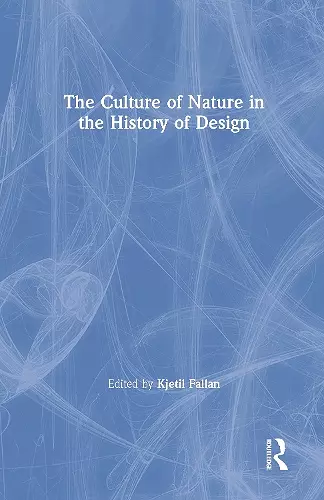The Culture of Nature in the History of Design
Format:Hardback
Publisher:Taylor & Francis Ltd
Published:9th Apr '19
Currently unavailable, and unfortunately no date known when it will be back
This hardback is available in another edition too:
- Paperback£45.99(9781138601925)

The Culture of Nature in the History of Design confronts the dilemma caused by design’s pertinent yet precarious position in environmental discourse through interdisciplinary conversations about the design of nature and the nature of design. Demonstrating that the deep entanglements of design and nature have a deeper and broader history than contemporary discourse on sustainable design and ecological design might imply, this book presents case studies ranging from the eighteenth to the twenty-first century and from Singapore to Mexico. It gathers scholarship on a broad range of fields/practices, from urban planning, landscape architecture, and architecture, to engineering design, industrial design, furniture design and graphic design.
From adobe architecture to the atomic bomb, from the bonsai tree to Biosphere 2, from pesticides to photovoltaics, from rust to recycling – the culture of nature permeates the history of design. As an activity and a profession always operating in the borderlands between human and non-human environments, design has always been part of the environmental problem, whilst also being an indispensable part of the solution.
The book ventures into domains as diverse as design theory, research, pedagogy, politics, activism, organizations, exhibitions, and fiction and trade literature to explore how design is constantly making and unmaking the environment and, conversely, how the environment is both making and unmaking design. This book will be of great interest to a range of scholarly fields, from design education and design history to environmental policy and environmental history.
'If, to Dieter Rams, good design is environmentally friendly, good design history is environmentally aware. Design history thrives when it interrogates the environmental complexities of human creations, and environmental historians can learn much of human behavior from design history. The essays in The Culture of Nature in the History of Design draw upon design histories of landscapes, communities, buildings, and materials around the world as different cultures, economic systems, and movements of resistance moved to create the new, create anew, to transform the discarded, and to reimagine the possible. The cumulative effect is a multifaceted conversation that systematically and profoundly examines the history of design’s entanglements with nature, a conversation that promises to inspire important discussions in the future.'
– Carl A. Zimring, author of Aluminum Upcycled: Sustainable Design in Historical Perspective
'The essays collected in The Culture of Nature in the History of Design offer fresh insights into environments and the objects that populate them. Its authors examine topics ranging from Victorian ecotopias to thermonuclear shelters, the totemic materiality of consumer goods to cybernetic mapping, desert and hydropower landscapes to "garbage housing" and cultures of D.I.Y. making, and experiments in postwar design pedagogy spanning continents and political systems. The volume’s vivid mosaic of theoretically grounded essays challenges readers to reconsider humanity’s making (and unmaking) of nature and the built environment.'
– Greg Castillo, College of Environmental Design, University of California, Berkeley
"The book is a significant offering, providing some valuable insights into where, why and how the history of design can contribute towards understanding humanity’s evolving, and increasingly catastrophic, impacts on the global environment … Its signal achievement is to create a licit space for historians of design to openly explore some of the most significant details of the recent past of ‘sustainable design’, whose history is still poorly understood and rather overshadowed by contemporary ideological preoccupations … the book’s linkage of this history to the more open theme of the ‘culture of nature’ ends up being a refreshing and rewarding one."
– Robert Crocker, Deputy Director, China Australia Centre for Sustainable Development, UniSA Creative, University of South Australia, Adelaide, Australia
ISBN: 9781138601918
Dimensions: unknown
Weight: 535g
258 pages